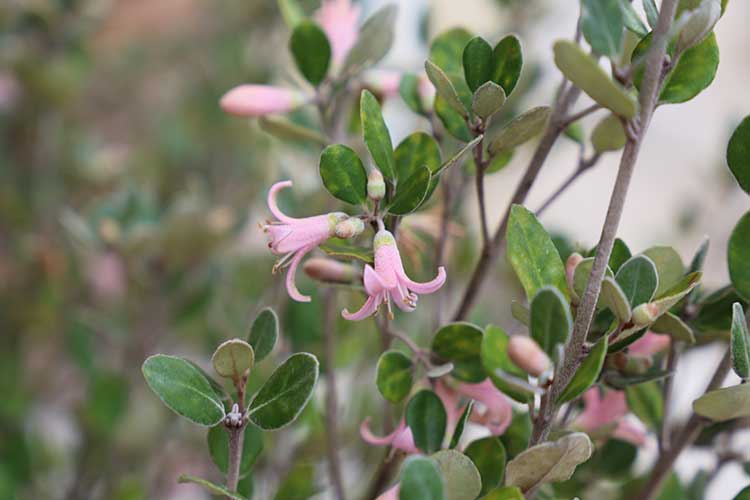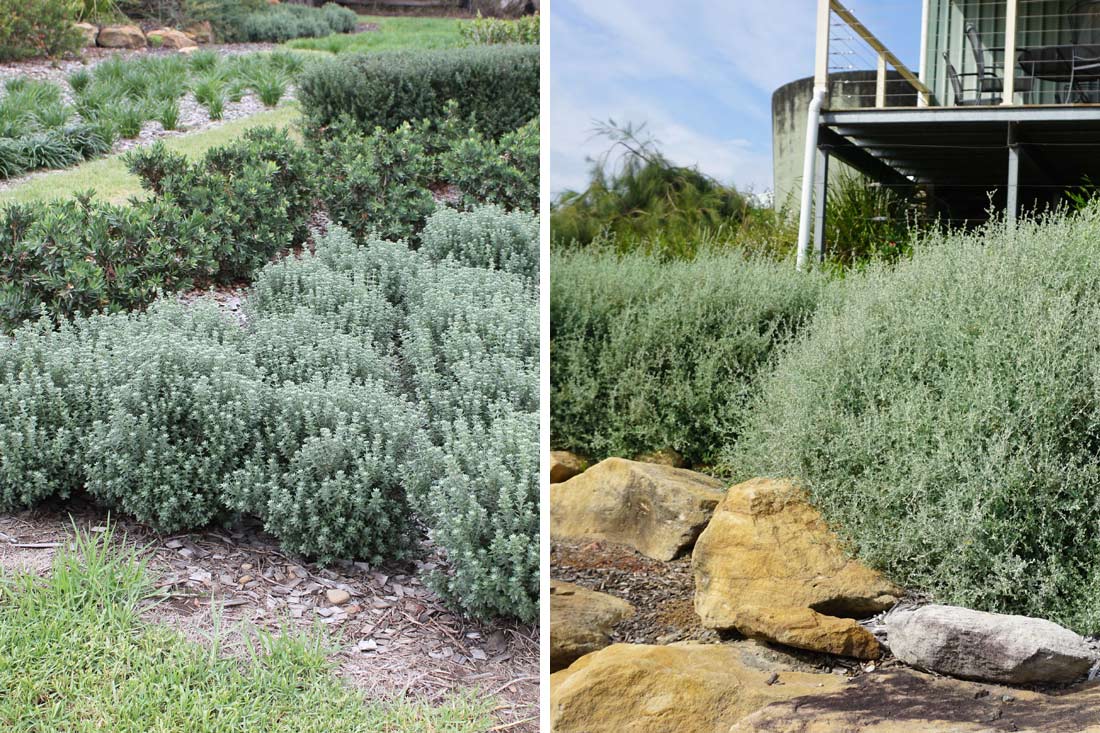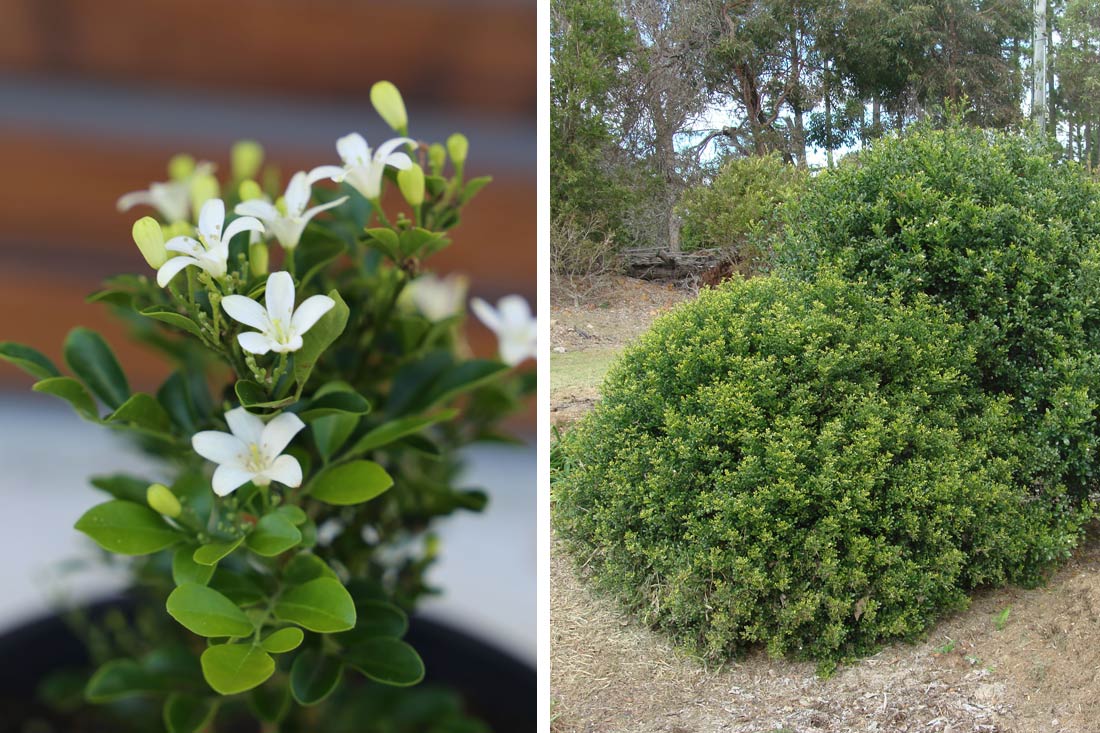Introduction
Are you looking for the ideal native screening plant for your next garden design, but you want to use something a bit different to the usual plants that everybody uses? Are you looking for a pop of colour and a resource for pollinators at times of the year when few other plants are in flower, while providing screening for unwanted sights and sounds?
The use of native plants for hedging and screening has gained immense popularity. Among these, Coastal Pink™ Correa stands out as an exceptional option for those seeking an attractive and resilient hedging solution.

Coastal Pink™ Correa has beautiful pink flowers.
Characteristics of Good Screening Plants
A good screening plant is defined by its dense foliage, medium-to-tall height, and durability in various environmental conditions so that it keeps its foliage instead of easily getting stressed and woody. It would ideally require minimal maintenance and thrive in the specific soil and light conditions of the area. These attributes ensure that the plant effectively provides privacy, reduces noise, and enhances the garden’s aesthetic appeal.
Common Native Australian Screening Plants
Australia is home to a variety of native plants that are ideal for use as hedges and screens. Some of the most popular choices include:
- Callistemons (Bottlebrushes): Known for their vibrant flowers and dense growth, these plants are hardy and adaptable, making them suitable for different climates.
- Lilly Pillies (Syzygium, Acmena, Waterhousea): Valued for their glossy leaves and colourful berries, these plants grow quickly and form dense hedges that attract birds.
- Adenanthos (Woolly Bush): With its fine, silvery foliage, this plant offers a unique texture, adding visual interest to gardens.
- Westringia (Coastal Rosemary): Its compact growth habit and tolerance for coastal conditions make it ideal for exposed sites.
Focus on Correas
While not often used as screening plants due to their (typically) less dense growth, correas hold a special place in Australian gardens. As part of the Rutaceae (citrus) family, they are evergreen shrubs appreciated for their ornamental appeal and ecological benefits.
Correas are known for attracting nectar-feeding birds and insects, thereby supporting local biodiversity. Their flowers bloom from autumn to spring, providing a valuable food source during times when other plants are not in flower.
While many correas struggle to hold their foliage when they get taller, one variety stands out with an improved, dense growth habit and greater resilience to stress factors like drought and cold.

Coastal Pink™ Correa, up close.
Coastal Pink™ Correa alba ‘COR10’ PBR: An Ideal Hedging and Screening Plant
Characteristics and Growth Habit
Coastal Pink™ Correa is a robust cultivated variety with a strong growth habit. It typically reaches up to 2 metres in height and width, although it can be pruned to maintain a smaller size.
Adaptability and Care Requirements
This correa is able to withstand coastal winds and is resilient to both drought and frost once established. This makes it suitable for coastal and inland environments alike. For optimal growth, it should be planted at a density of 1-2 plants per square metre or per linear metre when used as a hedge. It requires watering for the first 8-13 weeks until established, after which its water needs decrease significantly. Regular pruning once or twice a year and the use of a slow-release native fertiliser will help maintain its form and encourage healthy growth.
Ecological and Aesthetic Benefits
Coastal Pink Correa is not only a practical choice for hedging but also enriches garden biodiversity by attracting birds. Its pink flowers add a touch of colour and charm, enhancing the overall aesthetic value of any garden setting.
It can be used along fencelines, in front gardens, and basically anywhere that you need a medium-to-tall screen. It can also be used for topiary shapes and to hide unsightly garden elements such as HVAC units.
Suitability for Australian Regions
Coastal Pink™ Correa is well-suited for a wide range of Australian regions, including Victoria, ACT, South Australia, Western Australia, Tasmania, Southern New South Wales, and Sydney, as long as the soil provides good drainage. If it can tolerate the harsh winters of the ACT, it can survive just about any cold that any Australian region can throw at it.
Conclusion
Coastal Pink™ Correa stands out as a remarkable native fuchsia for hedging and screening, offering both practical and ecological benefits. Its strong growth habit, adaptability to coastal and varied conditions, and low maintenance requirements make it an ideal choice for enhancing Australian landscapes with natural beauty and biodiversity, whether you’re looking for a screen or a hedge.





